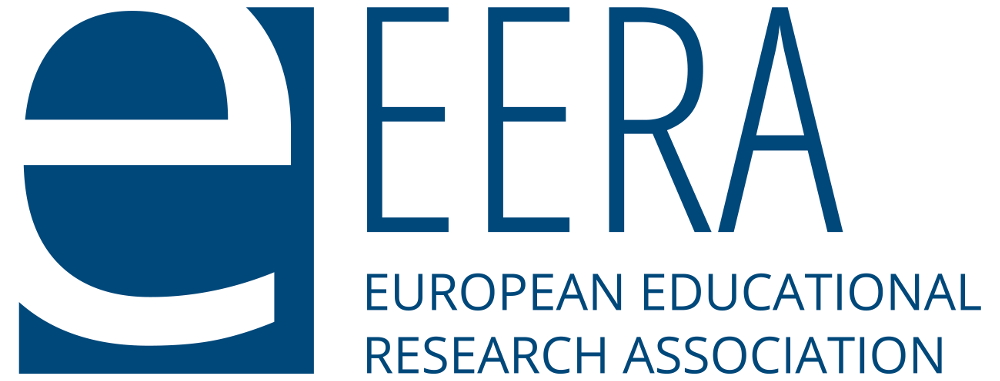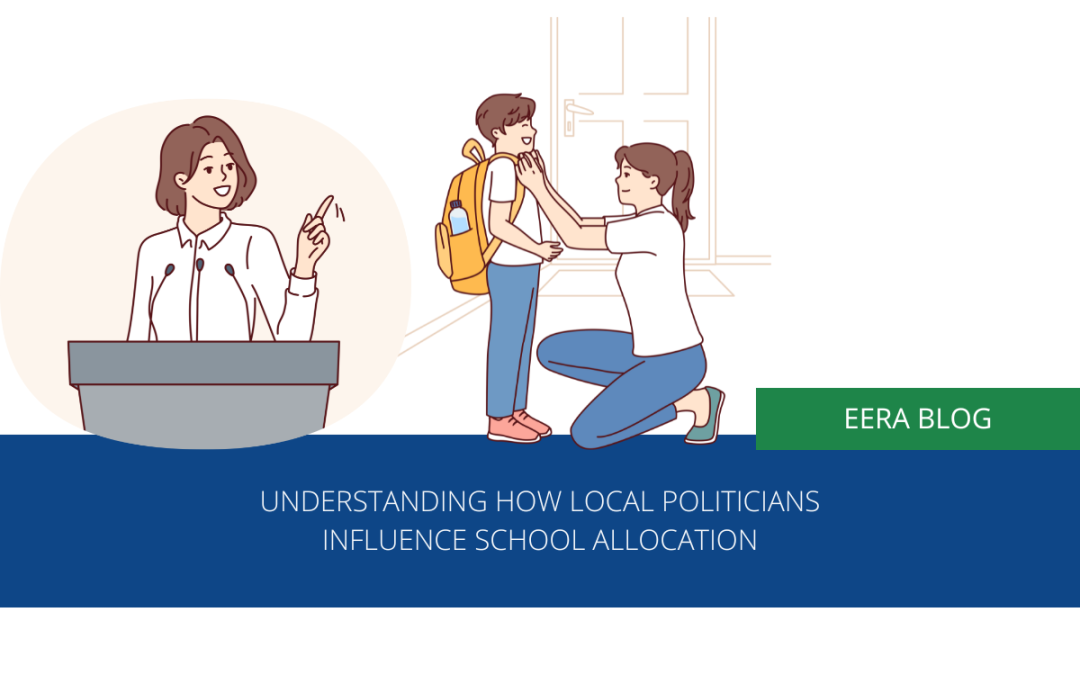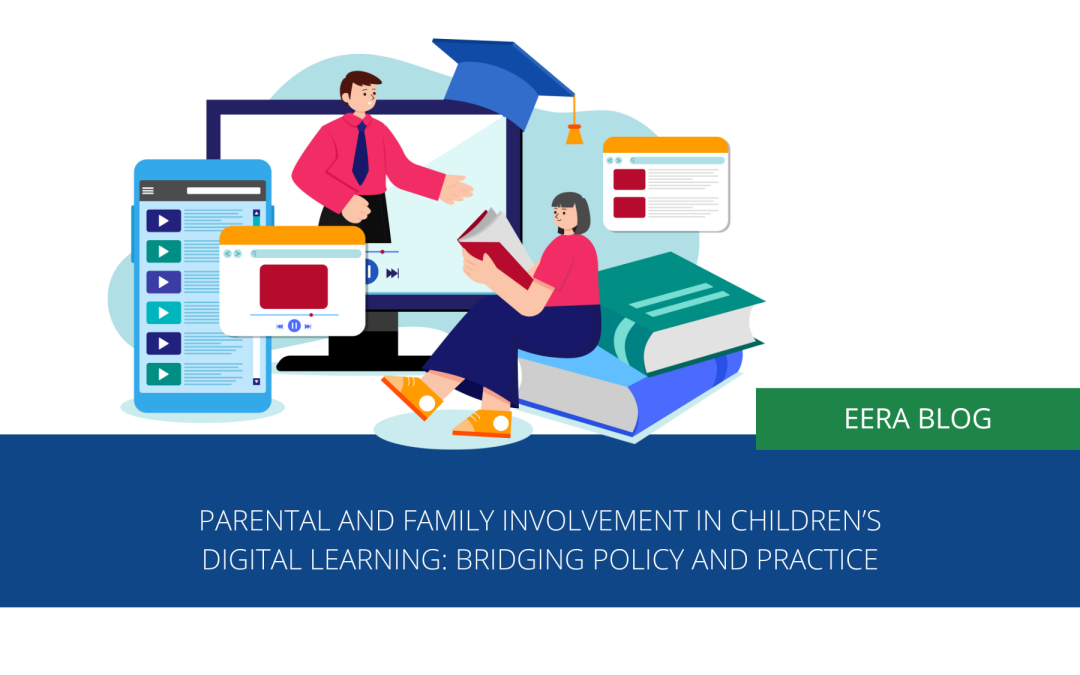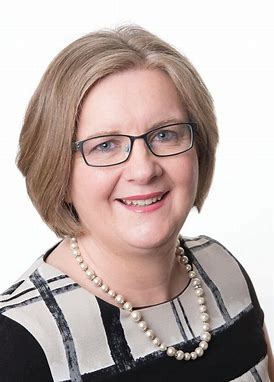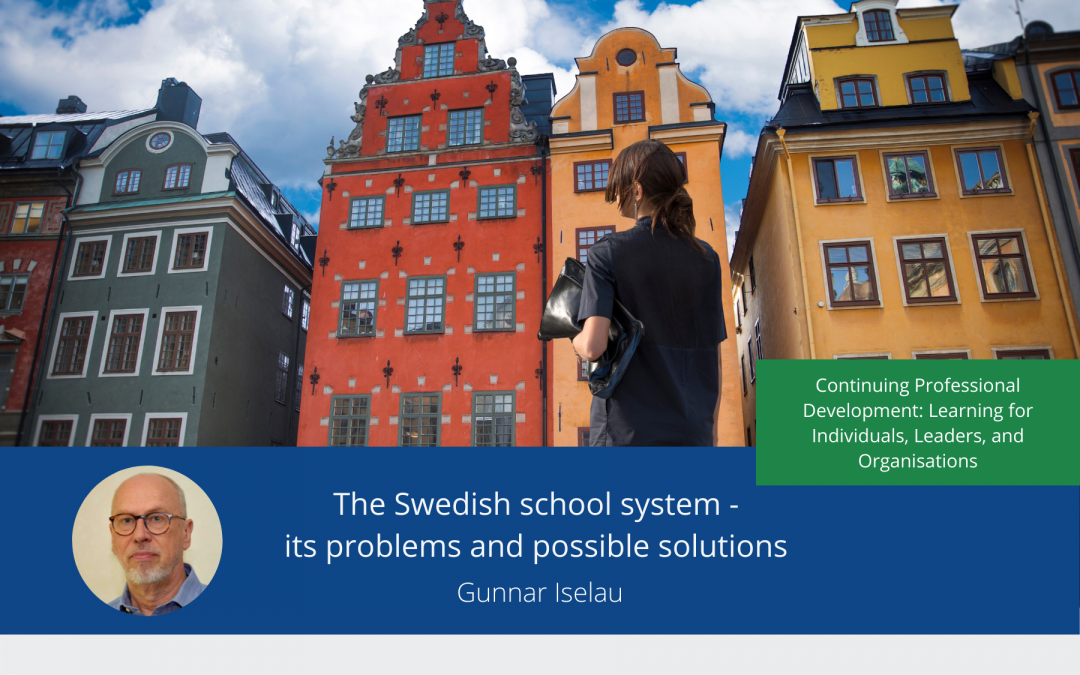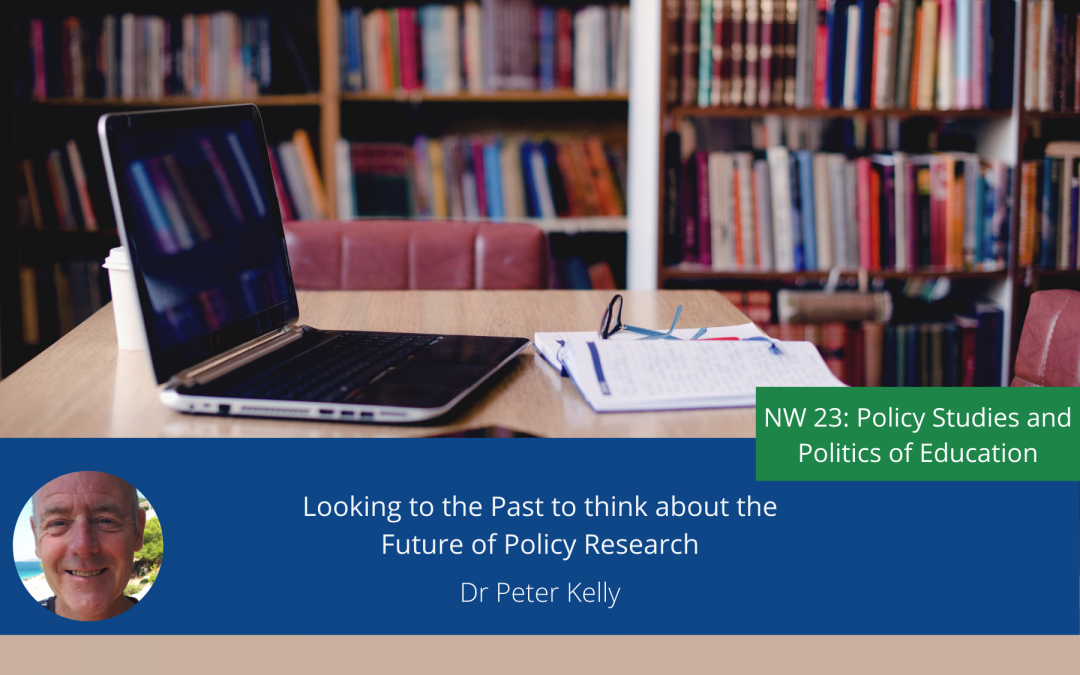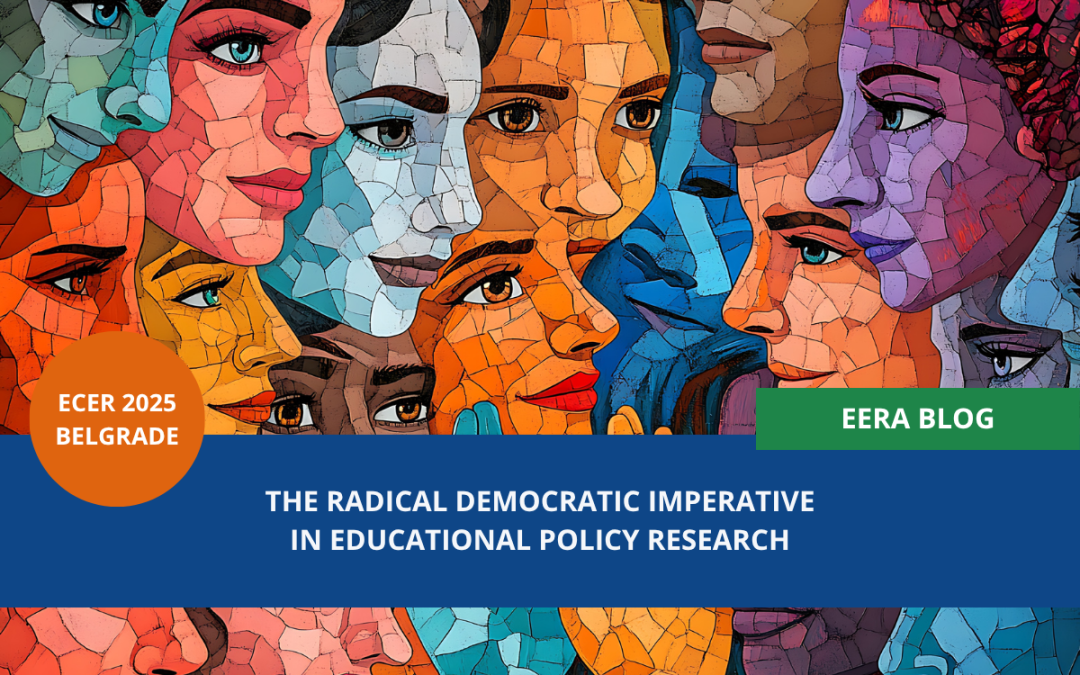
The radical democratic imperative in educational policy research
This blog post is both inspired by, and intended as a rejoinder to, a symposium on educational policy research for which I acted as a discussant within the Curriculum Network during the ECER 2025 conference.
The symposium: ‘Policy-Making for Plural Education Publics in Europe’, involved three quite diverse papers, which I must admit pressed me to conceptualise a coherence among them. Briefly, Lousie O’ Reilly and Majella Dempsey presented an analysis of the partnership model of curriculum-making in Ireland, charting both the overt and covert forces influencing a national curricular reform. Stavroula Philippou discussed the curriculum changes over time in home economics and health education in Cyprus, covering the last century, focusing on the way the ‘child’ is represented in official discourse, and in the process revealing the intersection of gendered and neoliberal vectors that have shaped this representation. Lastly, Nienke Niveen presented on a transdisciplinary approach for transformative learning in higher education, with a special emphasis on the necessity to blur the boundaries between the university and wider communities when tackling societal challenges.
Naturally, I cannot do justice to the complexity of work undertaken in each of these symposium presentations here, but my intent in penning this piece is to draw attention to some of the critical discussion points raised in both my own elaborations during the symposium and the ensuing discussion which emerged in the closing moments. My intent is to signal some of the critical arguments for democratic education made by scholars during ECER 2025 and surmise, a necessarily incomplete, set of provocations for educational policy and curriculum in our troubled European and global landscape.
Exclusive inclusion
If education is to fulfil its transformative potential and contribute to the resistance of democratic backsliding observable across Europe, then policy and curriculum-making play important roles.
O’ Reilly and Dempsey’s (2025) work give us insight into current practices of curriculum reform in the Irish context, particularly focusing on the long history of the ‘partnership model’ where a horizontal form allows recognised educational bodies to participate in deliberations on official curricula. Problematically, and as pointed out by the authors, this ostensibly inclusive practice also works to exclude certain voices from the process thereby representing more of a selective horizontal form of partnership. This resonates with the various politics that underpin acts of ‘inclusion’ which always simultaneously exclude certain others in the act of achieving a consensus (Mouffe, 2005).
Moreover, in the context of this apparent democratic approach to curriculum reform, the inclusion of certain stakeholders works to influence a politics of consensualism where the aim of ‘buy in’ works to smooth over any conflictual views within the system. Power is conceptualised here as something overtly possessed by state bodies and as something contingent for those teachers that the authors interviewed in their research — captured succinctly by O’Reilly that participants viewed ‘curriculum as something done to people’. Clearly power is more complex than the hierarchical way many view it, but it is nonetheless striking that this is how key stakeholders, such as teachers, view this supposedly democratic process.
The asymmetry in power between these stakeholders and state bodies is also tied to historical conditions. Ireland occupies a post-colonial perspective, where O’Reilly and Dempsey argue there is a tendency as a nation to look outwards at international rankings and the construction of a national uniqueness or difference.
The changing child of policy
This consideration of both contextual and historical elements is another important point to consider in aspiring to democratic practices in curriculum.
Stavroula Philippou (2025) addresses this in her conference presentation, focusing on the way the child figures as a locus of curricular discourse across time. Of course, one could argue that it is obvious this should be the case, but this neglects the varied ways in which figures of the child have been constructed across different sociopolitical and material vectors, and inordinately privileges a depoliticised, psychologised, Eurocentric, white, and neoliberal representation (Burman, 2012, 2019; Delahunty, 2024a, 2024b). Philippou shows how, within the context of Cyprus, the image of the child has evolved across different sociopolitical and economic epochs, transitioning from past humanistic to contemporary neoliberal conceptualisations.
The flexible curricular autonomy under the humanistic era is contrasted to the voluminous textual guidance provided within neoliberal policy governance. Accordingly, a tension is present where children are constructed as self-governing autonomous ‘future citizens’ while at the same time captured within a neoliberal dispositif of learning (Biesta, 2010) that demands a state prescribed curriculum as intervention. These contradictions are not new to the politics of neoliberalism and are perpetuated further through intergovernmental organisations such as the OECD and UNESCO, entities that act as key players in defining the ‘ideal child’ of education.
This work by Philippou adds further complexity to the workings of power and its interaction with different vertical layers and temporalities of social and political forces. At this point, rather than delving further into the critique of these notions of inclusion and governance, I’d like to signal some potentials, some actions and provocations, in the remaining sections of this post.
Needing more than critique
Moving towards an actionable curriculum intervention, Nienke Niveen (Nieveen et al., 2025) charts a way forward based on the findings of a large collaborative project that sought to explore and develop transdisciplinary and community-situated pedagogical approaches in higher education.
The project in question is Connects and the findings presented during the seminar by Niveen charts how under-researched an area transdisciplinary pedagogy truly is, which I must admit surprised me. Being immersed in critical analysis and research on policy, I sometimes do fear I miss the chance to point to alternatives, so it is enriching to hear about these practices in others’ work. Interestingly, in searching for definitions of this form of learning, the project researchers came across multiple variations on the theme of transdisciplinarity, which although may be frustrated in a technopolitical/social worldview of neoliberalism (Jasanoff, 2015), is adopted by Niveen and colleagues as a promissory aspect for democratic educational transformation.
However, it is not all straightforward, as learnings from the project itself highlight the core need to focus on relationality and co-learning between teachers, students and others. Within a heavily regulated landscape of policy and curricula, as highlighted in the previous seminar papers, the question turns to encouraging perspective taking among teachers, as well as other stakeholders. And this involves considering the purposes of education, and the role, and construction of teaching in a plural worldview. This is certainly not simple when governance simultaneously seeks to restrict subjectivities within the purview of educational accountability, global testing regimes, and capitalist desires.
Plural provocations
It is important to acknowledge my discussion here is unfolding during the first live televised genocide in human history, the invasion of Ukraine, the rise of right-wing political parties to power, and in an era when values for democracy across European populaces are at their lowest since the introduction of the Global Democracy Index in 2006 (Delahunty et al., 2024). I think it is fair to say that many of us in education pin our hopes that through various curricular insertions, we can turn this tide.
The papers in this seminar raised several important conclusions and as I hope the account here has shown, also represent a plurality of approaches and concepts. Acting as a discussant requires one to think — on the spot I might add — of coherences and synergies between the works. Once I got over the initial panic of this task, it was clear to me that this idea of plurality is a critical component of each. Arguing from a lack of plurality in curricular partnerships, as O’ Reilly and Dempsey did, towards a plural, shifting conception of the child across policy, as shown by Philippou, and concluding in the plurality of pedagogies and disciplines required for education transformation discussed by Niveen, captures this notion. And this is exactly the point for democratic curricula; there shouldn’t necessarily be coherence — at least on the surface. We must forefront the necessity of disagreement and pluralism for democracy.
Chantal Mouffe, critiquing the liberalist dilutions of democracy and championing a radical democracy, argues for the necessity of an underpinning agonistic pluralism (Mouffe, 1999). This agonism must be what we reorient ourselves to in policy and curriculum-making, in order to challenge the liberalist occupations with individualism, rationality, destruction of community and erosion of the public commons (Mouffe, 2005).
For educational researchers, this provocation comes at a moment when these tenets of liberalism have mutated, bolstered by advances in digital and psy-technologies (e.g., big data, machine learning, neural networks, precision governance) within the sociotechnical imaginary of surveillance capitalism. Ben Williamson’s keynote at ECER 2025, for example, sketched the data harmonising practices that are at present combining knowledges of genetics, IQ testing, big data, and economics through ‘inventive sciences’ that mark a bio-edu-data turn in the field. This has the potential to sketch a new image of the ideal child, as well as teachers, parents, policymakers and more, within a system of prediction and control made intelligible through a bioinformatic ordinalisation of individuals. Nudging practices are not new to the politics of late neoliberalism, but these new technologies signal the potential of ‘casting’ educational subjectivities, even prior to birth, through genetic selection and manipulation.
The danger, therefore, is more than the risk of consensualism and homogenising curricula and education, and we must reclaim a politics of agonism in our educative and scholarly endeavours. Importantly, this involves, necessitates even, both critique and action in complementary ways. For this author, an emergent example of such dispositions are represented in the collection of papers from this symposium on ‘Policy-Making for Plural Education Publics in Europe’, which charts hopeful future for educational policy and curriculum research.
Key messages
- A radical democratic conceptualisation and approach is required to stem the democratic backsliding emergent across Europe and the world
- While ostensibly inclusive practices of curriculum-making occur in different contexts, critical examination of these reveals certain exclusions that threaten democratic plurality
- We must be attentive and critical of the representation of ‘the child’ in policy discourses which invariably contain a complex set of politics legitimating and delegitimating certain practices and peoples
- Research needs to privilege critical scholarship and interrogation while at the same time considering actions which can point the way forwards, such as transcisciplary pedagogies
- With the anti-democratic potentials of certain forces within educational research today, curriculum and policy researchers need to reorient to a radical democratic outlook, premised upon an agonistic pluralism

Thomas Delahunty
Department of Education, Maynooth University, Ireland
Thomas is an Assistant Prof. in Education at Maynooth University in Ireland. His current research interests are in at the areas of education policy and the politics of education. He is a critical psychologist and uses a variety of critical, postructural, posthumanist, and decolonial methods to interrogate issues relating to equality, gender, race, and curriculum. He also engages in research in STEM education with colleagues and leads the RAISE research group (www.raise-stem.ie). Tom is also a co-editor of Irish Educational Studies.
Biesta, G. (2010). Good education in an age of measurement: ethics, politics, democracy. Paradigm Publishers. https://doi.org/10.4324/9781315634319
Burman, E. (2012). Deconstructing neoliberal childhood: Towards a feminist antipsychological approach. Childhood, 19(4), 423–438. https://doi.org/10.1177/0907568211430767
Burman, E. (2019). Child as method: implications for decolonising educational research. International Studies in Sociology of Education, 28(1), 4–26. https://doi.org/10.1080/09620214.2017.1412266
Delahunty, T. (2024a). The convergence of late neoliberalism and post-pandemic scientific optimism in the configuration of scientistic learnification. Educational Review, 1–23. https://doi.org/10.1080/00131911.2024.2307509
Delahunty, T. (2024b). ‘Datafied dividuals and learnified potentials’: The coloniality of datafication in an era of learnification. Educational Philosophy and Theory, 1–13. https://doi.org/10.1080/00131857.2024.2435333
Delahunty, T., Dempsey, M., Alvunger, D., Bergnehr, D., Hussain, S., Kitching, K., Kontovourki, S., Nieveen, N., Philippou, S., Ventura-Medina, E., & Dvořák, D. (2024). Citizen education curriculum making for troubled times. Orbis scholae, 18(3), 11–29. https://doi.org/https://doi.org/10.14712/23363177.2025.6
Jasanoff, S. (2015). Future Imperfect: Science, Technology, and the Imaginations of Modernity. In S. Jasanoff & S.-H. Kim (Eds.), Dreamscapes of Modernity (pp. 1–33). The University of Chicacgo Press.
Mouffe, C. (2005). The return of the political (Vol. 8). Verso. https://monoskop.org/images/c/cb/Mouffe_Chantal_The_Return_of_the_Political.pdf
Nieveen, N., Gulikers, J., Visscher-Voerman, I., & den Hertog, J. (2025, September 10th). Transdisciplinary Learning for Societal Transformations ECER 2025, Belgrade.
